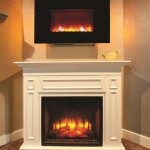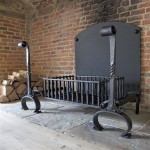Granite Tiles For Fireplace Hearth: A Comprehensive Guide
The fireplace hearth serves as a critical component of a fire feature, providing both functional safety and aesthetic appeal to a living space. It acts as a non-combustible barrier, protecting the surrounding flooring and potentially combustible materials from sparks, embers, and radiant heat emitted by the fire. Choosing the right material for the hearth is paramount, and granite tiles have emerged as a popular and durable option. This article delves into the characteristics, benefits, installation considerations, and maintenance requirements associated with using granite tiles for a fireplace hearth.
Granite, an igneous rock formed from slowly cooling magma deep beneath the Earth's surface, is renowned for its exceptional hardness, density, and resistance to heat. Its composition primarily consists of quartz, feldspar, and mica, which contribute to its characteristic granular texture and varied color palette. These inherent properties make granite suitable for demanding applications, including fireplace hearths, where durability and heat resistance are of utmost importance. The natural beauty of granite, with its unique veining and patterns, also allows it to seamlessly integrate into a variety of design aesthetics, from traditional to contemporary.
Key Benefits of Using Granite Tiles for a Fireplace Hearth
Granite tiles offer a multitude of advantages when used as a fireplace hearth material. These advantages stem from the stone's inherent properties and suitability for withstanding the rigors of fireplace use.
Firstly, the superior heat resistance of granite is a significant benefit. Granite can withstand extremely high temperatures without cracking, warping, or degrading. This is crucial in a fireplace hearth environment, where direct exposure to heat is inevitable. The heat resistance protects the underlying subfloor and nearby combustible materials from potential fire hazards. The density of granite also contributes to its heat retention capabilities, allowing it to radiate warmth into the room even after the fire has subsided.
Secondly, the durability and longevity of granite are important considerations. Granite is a naturally hard and dense material, making it highly resistant to scratches, chips, and impacts. Everyday wear and tear, such as dropped logs or cleaning activities, are unlikely to damage a granite hearth. This durability translates to a long lifespan, reducing the need for frequent repairs or replacements. Properly installed and maintained, a granite hearth can last for generations.
Thirdly, the aesthetic versatility of granite allows it to complement a wide range of interior design styles. Granite is available in a vast array of colors, patterns, and finishes, enabling homeowners to select a tile that perfectly matches their existing décor. From classic black and white granite to more exotic and colorful varieties, there is a granite tile to suit almost any taste. The natural variations in granite ensure that each hearth is unique, adding character and visual interest to the fireplace area.
Beyond these primary benefits, granite is also relatively easy to clean and maintain. Its non-porous surface resists staining and is easily wiped clean with a damp cloth. Routine cleaning helps to prevent the buildup of soot and ash, maintaining the appearance of the hearth.
Considerations for Installation and Design
Proper installation is essential to ensure the longevity and performance of a granite tile hearth. Careful planning and attention to detail are crucial during the installation process.
The first step is to ensure adequate subfloor preparation. The subfloor must be level, structurally sound, and capable of supporting the weight of the granite tiles. Any imperfections in the subfloor can lead to cracked tiles or an uneven hearth surface. A layer of cement board is often recommended as a substrate for granite tiles, providing a stable and moisture-resistant base.
Choosing the appropriate mortar and grout is another critical consideration. A high-quality, modified thin-set mortar specifically designed for natural stone is necessary to ensure proper adhesion and prevent staining. The grout should also be selected to complement the color of the granite tiles and be resistant to staining and moisture. Epoxy grout is a good option for its superior durability and stain resistance, especially in high-traffic areas around the fireplace.
Layout and design play an important role in the overall appearance of the hearth. The size and shape of the hearth should be proportional to the size of the fireplace and the surrounding room. Common hearth shapes include rectangular, square, and curved designs. The tiles can be laid in a variety of patterns, such as a grid, diagonal, or herringbone pattern, to create visual interest. A professional tile installer can advise on the best layout and design options for a particular space.
Furthermore, consider incorporating a non-combustible trim around the perimeter of the hearth to create a finished look and protect adjacent flooring. Fire-resistant materials such as brick, stone, or metal can be used for this purpose.
Maintenance and Care of Granite Tile Hearths
While granite is a durable and low-maintenance material, proper care and maintenance are still necessary to preserve its appearance and extend its lifespan.
Regular cleaning is essential to remove soot, ash, and other debris that can accumulate on the hearth surface. A damp cloth or mop with a mild detergent is usually sufficient for routine cleaning. Avoid using abrasive cleaners or scouring pads, as these can scratch the surface of the granite. For more stubborn stains, a specialized stone cleaner may be necessary.
Sealing granite tiles is recommended to protect them from staining and moisture penetration. A penetrating sealer designed for natural stone should be applied according to the manufacturer's instructions. Sealing helps to prevent liquids from seeping into the pores of the granite, making it easier to clean and maintain.
Promptly clean up any spills to prevent staining. Dark-colored liquids, such as wine or coffee, can stain granite if left to sit for an extended period. Use a clean cloth to blot up the spill immediately and then clean the area with a damp cloth and mild detergent.
Inspect the grout lines regularly for any cracks or damage. Damaged grout can allow moisture to penetrate the subfloor, potentially leading to problems. Repair or replace damaged grout as needed to maintain the integrity of the hearth.
Finally, avoid placing heavy objects directly on the granite hearth, as this can cause chipping or cracking. Use a protective mat or pad under heavy items to distribute the weight evenly.
Choosing granite tiles for a fireplace hearth offers a combination of aesthetic appeal, durability, and heat resistance. By understanding the characteristics of granite, carefully considering the installation process, and implementing a proper maintenance routine, homeowners can enjoy a beautiful and functional fireplace hearth for many years to come.

China Customized Granite Slab For Fireplace Hearth Suppliers Whole Service Xuri Stone

Stone Fireplace Surround Granite Mantel Tile Surrounds

Granite Hearths For Multi Fuel Stoves Cast Fireplaces

Natural Stone Granite Fireplace Hearth 18mm Thick Decoridea

Which Is Better Marble Or Granite Tiles For Fireplace

9 Design Ideas For Updating Or Adding A Fireplace To Your Home

Granite Fireplace Hearth And Surround Home

Natural Stone Fireplace Surrounds Hearths Mantels Cabinets Countertops Milwaee

New Granite Tiles For Remodeled Fireplace G Bragg Constructionbragg Construction

Fireplace Makeover How To Tile Over A Surround Love Remodeled








